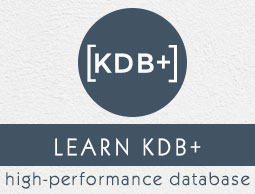
- KDB+ 教程
- KDB+ - 首頁
- Q 程式語言
- Q 程式語言
- Q 語言 - 型別轉換
- Q 語言 - 時間資料
- Q 語言 - 列表
- Q 語言 - 索引
- Q 語言 - 字典
- Q 語言 - 表
- Q 語言 - 動詞與副詞
- Q 語言 - 連線
- Q 語言 - 函式
- Q 語言 - 內建函式
- Q 語言 - 查詢
- Q - 程序間通訊
- Q - 訊息處理程式(.Z 庫)
- KDB+ 實用資源
- KDB+ - 快速指南
- KDB+ - 實用資源
- KDB+ - 討論
Q 語言 - 列表
列表是q 語言的基本構建模組,因此透徹地瞭解列表非常重要。列表只是一組按順序排列的原子(原子元素)和其他列表(一個或多個原子的組)。
列表型別
通用列表用匹配的括號括住其專案,並用分號分隔它們。例如 -
(9;8;7) or ("a"; "b"; "c") or (-10.0; 3.1415e; `abcd; "r")
如果一個列表包括相同型別的原子,則稱為統一列表。否則稱為通用列表(混合型別)。
計數
我們可以透過其計數獲取列表中的專案數。
q)l1:(-10.0;3.1415e;`abcd;"r") / Assigning variable name to general list q)count l1 / Calculating number of items in the list l1 4
簡單列表的示例
q)h:(1h;2h;255h) / Simple Integer List
q)h
1 2 255h
q)f:(123.4567;9876.543;98.7) / Simple Floating Point List
q)f
123.4567 9876.543 98.7
q)b:(0b;1b;0b;1b;1b) / Simple Binary Lists
q)b
01011b
q)symbols:(`Life;`Is;`Beautiful) / Simple Symbols List
q)symbols
`Life`Is`Beautiful
q)chars:("h";"e";"l";"l";"o";" ";"w";"o";"r";"l";"d")
/ Simple char lists and Strings.
q)chars
"hello world"
**注意 - 一個 char 的簡單列表稱為字串。**
一個列表包含原子或列表。要建立一個單項列表,我們使用 -
q)singleton:enlist 42 q)singleton ,42
要區分原子和等效單例,請檢查其型別的符號。
q)signum type 42 -1i q)signum type enlist 42 1i
廣告